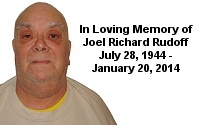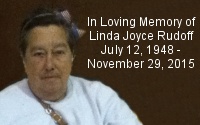| « New York Filming Locations - Broadway | New York Filming Locations - Manhattan City Bank » |
 |
Manhattan Bridge & FDR Drive North New York, NY 10002 * Google Maps street view, to Manhattan on upper roadway |
History - written by Chris Buchner (used with permission)
In 1892, Frederick Uhlmann proposed a design for a traditional wire-cable suspension bridge over the East River exclusively for trains. The plan was shot down, but his other proposed plan for the Williamsberg Bridge went ahead in 1895. In 1901, Gustav Lindenthal, the commissioner for the newly created New York City Department of Bridges presented plans for what he called Suspension Bridge #3. They were approved and R.S. Buck was appointed chief engineer. Planning for the Manhattan Bridge began in October of that year.
Lindenthal's first design was a hybrid of the Brooklyn Bridge and Williamsberg Bridge. The Municipal Art Commission squashed those plans quickly. His next design was extremely radical for bridge design. He made the bridge the epitome of flexible, and gave the bridge's towers a two-dimensional profile that contrasted the other two bridges' three-dimensional designs.
Such radical designs raised many questions of safety in the engineering world. The fight for a more conventional design was waged through 1904, but Lindenthal's design never stood a chance. With new Mayor George McClellan in office and the Roebling Iron Work's interest in a traditional suspension bridge, Lindenthal was removed as commissioner.
George E. Best was put in and quickly appointed Othniel Nichols as chief engineer to oversee construction of the bridge utilizing a new theory, deflective theory. Elements from Lindenthal's design survived, but the bridge was essentially a traditional suspension bridge. Carrere and Hastings, designers of the New York Public Library, lent their talents to the anchorage at the Manhattan approach. Two granite-encased anchorages contain arches, buttresses as well as other embellishments, and the main arch entranceway was modeled after Porte St. Denis in France.
Embittered Lindenthal attacked McClellan and Tammany Hall, citing work done under Tammany administrations are plighted by delays, increased expenditures and corruption. Eager to prove him wrong, McClellan rushed the work on the bridge. On December 31, 1909, McClellan's last official act was to open the $31 million bridge. However, the roadways, subway and trolley tracks and pedestrian walkways were not yet completed as mass transit was removed from the control of the bridge commissioner.
Over the years, problems began to arise. Deflection theory failed to take into account the amount of traffic that would be crossing over the bridge. Trains passing by on both sides caused the roadways to bend a full 8 feet. In the 40s, the bridge was reconfigured to carry 7 lanes of vehicle traffic and four train tracks, eliminating the trolleys altogether. But the bridge was showing signs of strain. Designer David Steinman argued that the only way to save the bridge was to remove the subway lines and build a separate tunnel.
Inspection of the bridge in 1978 found cracking and corrosion. A single train car passing by caused microscopic cracks in the structure that grew over time. The bridge was quickly closed. In 1982, the New York City Department of Transportation (NYCDOT) decided to reconstruct the bridge rather than build a replacement bridge. The only hitch was the fate of one East River bridge is linked with all East River bridges. In order to renovate the Manhattan Bridge, the DOT had to launch a multi-scale project including the Queensboro, Williamsberg and Brooklyn Bridges.
The project is still going on today, having been met with many delays, and being carried out in three phases targeting different areas. The first phase was completed in the 90s, while the second and third expects completion sometime in 2005. Recently, the city reopened one of the pedestrian paths across the bridge, allowing people to walk across it once again. Currently, the bridge supports seven lanes of traffic and the B, D, N and Q trains.
Fun Facts
- This scene takes place after the deleted Fort Detmerring scene.
- 20 Years Later: The Bell Atlantic building the background of the shot is now the Verizon Building since the company merged with GTE in the late 90s. (text written by Chris Buchner)
Real World Photos
 |
 |
 (source) |
Outside Links
Search (Reference Library Only)


(Ghostbusters Amazon Store)

Please be aware that as an Amazon Associate, I earn a very tiny commission from purchases made though the Amazon links on this site.


|
COMMUNITY LINKS
NEWS • Ghostbusters Wiki • GB News • GB Fans • Ghostbusters Mania • GB Reboot Facebook • Proton Charging News Archive FORUMS • GB Fans • EctoZone OFFICIAL • Ghost Corps Facebook • Ghostbusters Facebook • Ghostbusters YouTube • Ghostbusters.com |
[ MORE TRIBUTES ]

( MY COMPARISON REVIEW )
( AVOID SHIPPINGEASY/STAMPS.COM )


U.S. eBay (Ghostbusters stuff)
U.K. eBay (Ghostbusters stuff)






